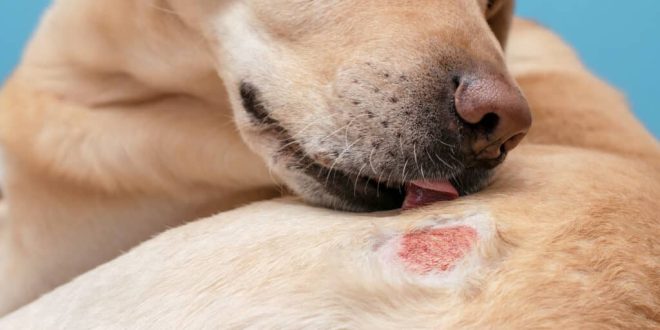Dogs are known for being loyal and loving companions, but for some people, having a dog in the home can trigger allergic reactions. Whether you’re a dog owner or someone considering adopting a dog, understanding dog allergies and how to manage them is key to creating a comfortable environment for both humans and pets. Here’s everything you need to know about dog allergies, including what causes them, common symptoms, and how to cope with them.
What Causes Dog Allergies?
Dog allergies are caused by proteins found in a dog’s saliva, dander (skin flakes), and urine. When a dog grooms itself by licking its fur, proteins from its saliva transfer to the fur and skin. As the dog sheds hair and dander, it becomes airborne, potentially triggering allergic reactions in sensitive individuals. These allergens can settle on furniture, bedding, and even in the air, which is why even people who don’t directly interact with dogs may experience symptoms.
Common Symptoms of Dog Allergies
If you’re allergic to dogs, you may experience a range of symptoms, including:
- Sneezing, runny or stuffy nose
- Itchy or watery eyes
- Coughing, wheezing, or shortness of breath
- Skin rashes or hives, especially after direct contact
- Asthma-like symptoms or worsening asthma in those with pre-existing respiratory conditions
Symptoms can range from mild to severe, depending on the level of exposure to the allergens and the individual’s sensitivity.
Managing Dog Allergies
While there’s no cure for dog allergies, there are several ways to manage and reduce symptoms, allowing you to live more comfortably with your pet:
1. Regular Cleaning and Hygiene
Frequent cleaning is essential to reduce dog allergens in your home. Vacuum carpets, furniture, and floors with a vacuum cleaner that has a HEPA filter, which can trap small particles of dander. Wash your dog’s bedding, toys, and any other items they frequently come into contact with to keep allergens at bay.
2. Designate Allergy-Free Zones
Create specific areas in your home where your dog is not allowed, such as your bedroom or other rooms where you spend a lot of time. By keeping these areas dog-free, you can reduce your exposure to allergens and have a safe space to relax.
3. Air Purifiers
HEPA air purifiers can help to remove dog dander and other allergens from the air. Consider placing an air purifier in the rooms where your dog spends the most time or where you spend time relaxing to improve air quality and reduce allergens.
4. Bathe and Groom Your Dog Regularly
Regular grooming and bathing help reduce the amount of loose hair and dander your dog sheds. This can be especially helpful for breeds that shed heavily. It’s recommended to use a pet-friendly shampoo that can remove dander from your dog’s coat. However, not all dogs tolerate frequent baths, so it’s best to consult a groomer if needed.
5. Wash Your Hands and Change Clothes After Contact
After handling your dog, make sure to wash your hands thoroughly to remove any allergens. It’s also a good idea to change clothes if you’ve been in direct contact with your dog, especially if you’re particularly sensitive to allergens.
6. Consider Allergy Medications
Over-the-counter antihistamines, decongestants, and nasal sprays can help manage symptoms of dog allergies. If your symptoms are severe, you may want to consult with an allergist, who may prescribe stronger medications or recommend allergy shots (immunotherapy) to gradually desensitize you to dog allergens.
7. Hypoallergenic Dog Breeds
While no dog breed is entirely hypoallergenic, some breeds are known to produce fewer allergens than others. Breeds that shed less dander or hair are often recommended for people with allergies. These breeds include:
- Poodle (and Poodle mixes)
- Bichon Frise
- Schnauzer
- Maltese
- Shih Tzu
These breeds have hair that grows like human hair and tends to shed less, reducing the amount of dander in the home. However, even hypoallergenic dogs still produce some allergens, so it’s important to understand that there is no completely allergen-free dog.
Living with Dog Allergies
If you already have a dog and develop allergies, don’t worry—there are still plenty of ways to manage your symptoms. It’s essential to maintain a clean environment, avoid close contact with allergens, and keep your home well-ventilated. If you’re considering getting a dog but are concerned about allergies, spending time with different dogs before adoption can help you gauge your reaction. Visiting a shelter or friends with dogs will give you a sense of whether you can tolerate being around them.
Conclusion
Dog allergies don’t necessarily mean you have to give up your furry friend. By understanding the causes of dog allergies and implementing practical steps to manage allergens, you can create a comfortable living environment for both you and your dog. Regular cleaning, grooming, and possible medical treatments can make living with a dog and allergies much more manageable. If symptoms become severe, seeking advice from an allergist can help you find the right solution to keep both your health and your pet’s happiness in check.
 PAWS AND WHISKERS PET CARE
PAWS AND WHISKERS PET CARE

